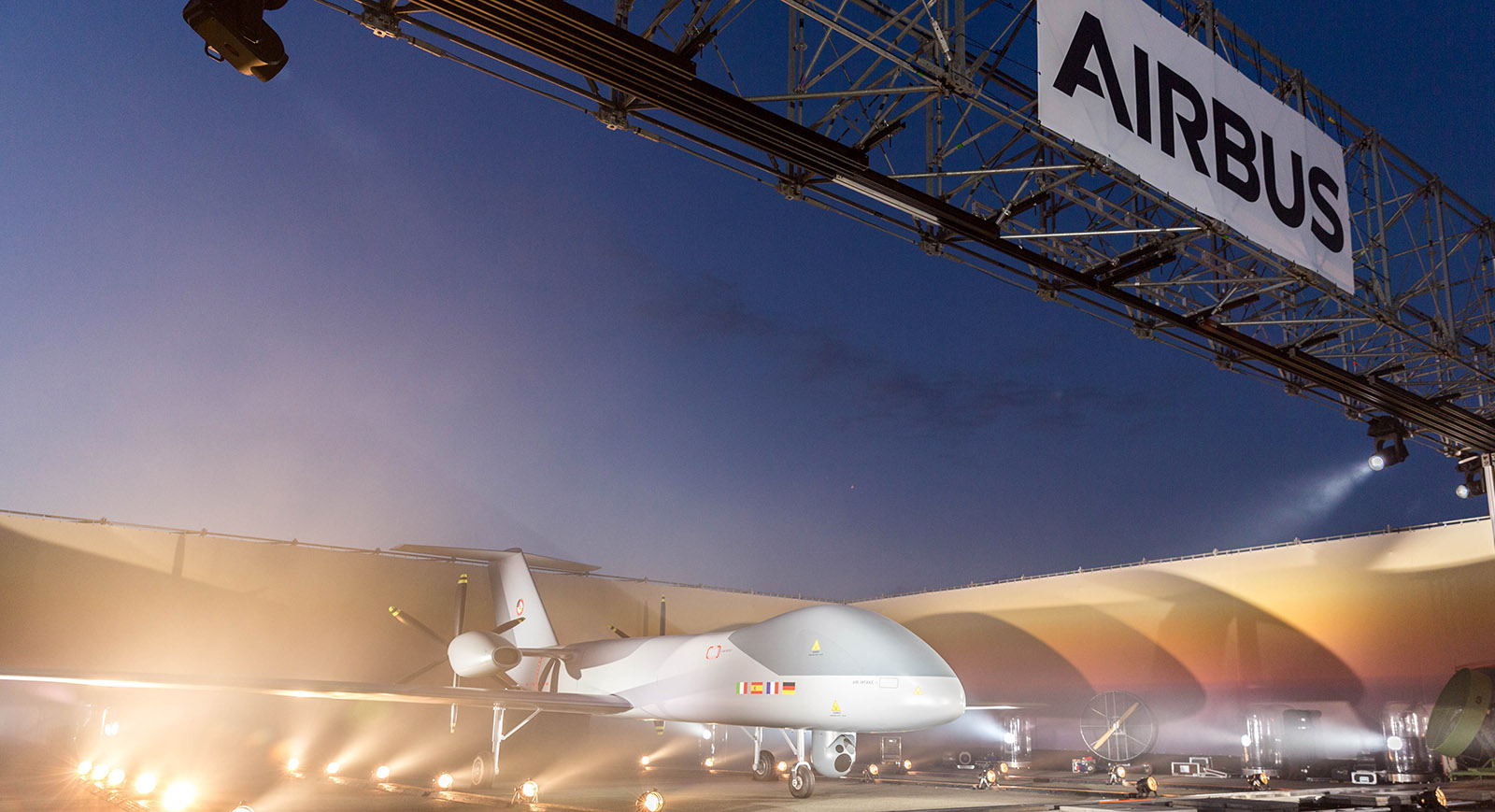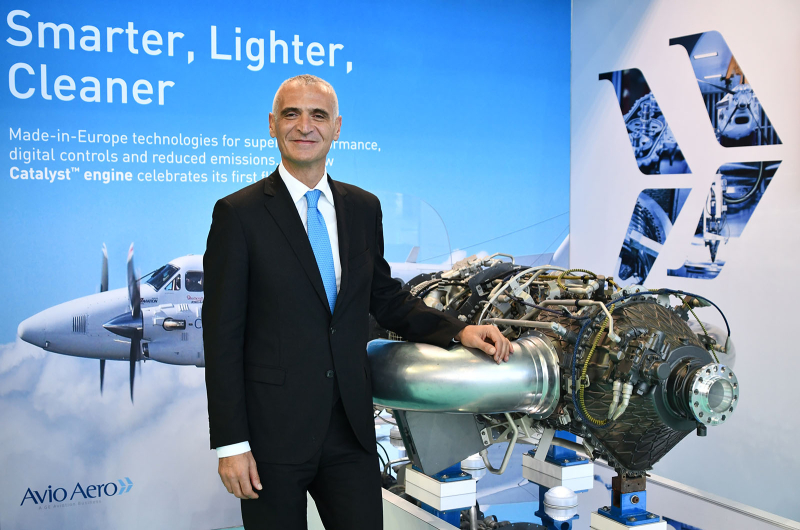Aviation
The reasons of a bright success
In conversation with Riccardo Procacci, CEO of Avio Aero, who gives his view on how and why the Catalyst engine has been selected to power the new Eurodrone unmanned aerial system.
Apr 2022
Riccardo, how excited are you on the selection?
“I’m mostly thrilled for our people. For our teams in Italy, in Germany, in Czech Republic and in Poland. They’ve been working very hard for years to be ready for this opportunity. They’ve had a tough two years with the pandemic, but it hasn’t stopped their determination and spirit. They are experts at what they do and developing innovative new aircraft systems is what they do best. This is a great opportunity for them, as well as for all of us to show the Industry what we can do. This is a pan-European program and Avio Aero is very proud to be part of it”.
Why was the Catalyst chosen?
“The Catalyst meets all of the Eurodrone requirements! What we heard from Airbus is exactly what you will have seen in the Airbus’ announcement: the Catalyst will ensure that the Eurodrone programme can proceed on time, on cost and in line with the specifications. The Avio Aero proposal was identified as the best solution based on superior performance, lower developmental risk, better in-service economics as well as growth potential. Catalyst will offer a truly European solution and will thus contribute to the overall role of Eurodrone as an enabler of strategic autonomy. It is already demonstrating its capabilities through the current test and certification program, and I love that its entirely developed and manufactured in Europe”.
The Eurodrone is about strategic autonomy, how does Avio Aero and the Catalyst engine support it?
“The Catalyst has been entirely developed in Europe and, as well as the Eurodrone programme, this engine is 100% ITAR-free (International Traffic in Arms Regulation), thus enabling independence from US export controls. From a manufacturing perspective, the production value will be in France, Spain, Germany, Italy, Poland and Czech Republic. Above all this, Avio Aero, as an historical player in the European Aerospace & Defence Industry, has built several collaborations in Europe in order to enhance the Catalyst’s European value: just to mention one - for the Eurodrone propeller we are working with the Bavarian company MT-Propeller. Whichever way you look at it … it’s a European engine”.
So, basically, a 100% made in Europe engine. And what about the Intellectual Property?
“Thanks for the question, because I want to be clear on this: the IP of the Catalyst is European, the engine has been developed entirely in Europe and all future modifications for the Eurodrone program will be performed in Europe and the IP is owned by our European legal entities”.
What will it take to be ready for the Eurodrone first flight?
“We have a great head start. The current Catalyst engine is being certified and tested in Europe, as we speak: it has achieved more than 3000 hours of combined test operation, over 250 hours of flight tests and almost 50% of certification testing have been completed (800+ hours) to date. This allows us to lower our development timeline and risk for Eurodrone engine. We will extend the terms of approval with EASA of the Avio Aero Design Organization Approval (DOA), with the aim to hold the EASA Type Certificate for the Eurodrone engine. At our Prague facility today, we already design, test and assemble entire turboprop engines”.
Riccardo, coming back on the technical features: what’s so special about the technology inside the Catalyst?
“The Catalyst is conceived to bring a radical change to this segment both in terms of performance and of technical features. It is the first turboprop in aviation history made with 3D-printed components, enabling a lighter and more efficient engine, and first in its class to introduce two stages of variable stator compressor vanes and cooled high-pressure turbine blades. It performs at an industry-best 16:1 overall pressure ratio, enabling the engine to deliver up to 20% lower fuel consumption and CO2 emission, and 10% higher cruise power compared to competitor offerings in the same size class. This performance allows the Catalyst to provide more payload capacity or more hours flying. The Catalyst is equipped with the FADEC (Full Authority Digital Engine Control), with integrated propeller and engine control system that provides the (ground) pilot with better control and greater responsiveness and simplifying integration between the propeller and avionics. The FADEC collects data throughout the entire engine in order to optimize power generation and fuel consumption. On the sustainability side, Catalyst can use Sustainable Aviation Fuels (SAF) and is undergoing SAF demonstration at the advanced test cells located in Prague, thanks to the agreement we have with the Czech Technical University in Prague (CVUT). The goal is to successfully run the Catalyst with 100% SAF within the next few months”.
How many employees are working on this program and where are they located?
“Not to sound like a broken record, but the Catalyst programme is clearly pan-European, just like the Eurodrone programme is. The Catalyst programme and engineering team, as well as the engine’s supply chain team, is based purely in Europe. We have multiple sites involved: Rivalta di Torino, Pomigliano d’Arco and Brindisi plants in Italy, at two sites in Poland, Prague in the Czech Republic), and at the Advanced Technology Center in Munich, Germany. We were able to count up to 300 European employees, spread in the countries I have mentioned before, will be working on the program”.
What makes you most proud when you think about this engine win?
“I want to remind you that the Catalyst engine is the first turboprop engine to be entirely developed and manufactured in Europe in the past 50 years. This has been an incredible journey so far, and it should make each of us very proud. We started from a clean sheet and we celebrated the first flight last September: a history of success. Despite the pandemic and the unpredictability of these past years, our employees continue to work together across Europe. In this challenge, we did not put just our brains and skills, but most of all you can see all hearts and passion embedded in this engine”.
Eurodrone images in page are courtesy of Airbus Defence and Space.






